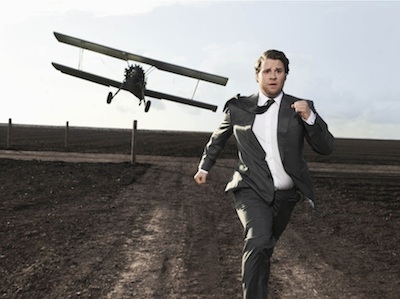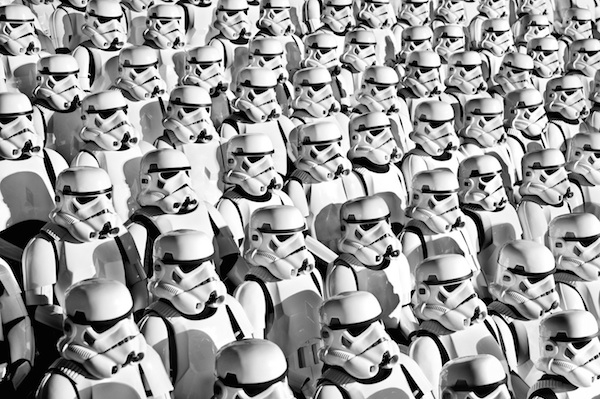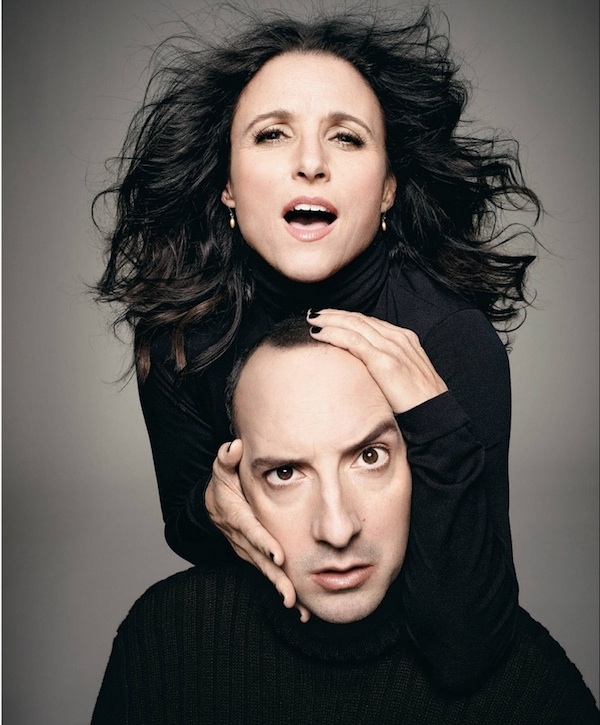Photographer Profile - Art Streiber: "Yes is the answer. Now what is the question?"

|
|
|
Art Streiber is proud to be called a problem solver. “Over my freelance career, I’ve developed a reputation as a fireman,” says the Los Angeles-based photographer. “I’ve literally gotten phone calls saying, ‘This shoot can’t be done, so we called you.’ Or, ‘We don’t know how to solve this, so we called you.’”
Streiber's career stretches back two decades, during which he has shot for the New York Times Magazine, Entertainment Weekly, Newsweek, Fast Company, Town & Country, The Hollywood Reporter, Architectural Digest, GQ … really, the list just goes on and on.
For Vanity Fair, Streiber has twice recreated the famous crop-dusting scene from Alfred Hitchcock’s North By Northwest, once for a portrait of Seth Rogen and once for a shot of the film’s legendary screenwriter, Ernest Lehman. (That photo required a farmer in Camarillo, California, to hold off planting his strawberry crop for a week, Streiber notes.) In 2012, he told Pro Photo Daily about how he created an epic group shot, photographing 116 film stars to mark the 100th anniversary of Paramount Pictures.
One of his more recent feats was shooting an entire editorial package for a Wired magazine issue on the upcoming Star Wars movie. It involved a concept cover, plus an illustrative opener with six concept executions and 10 individual character portraits. "It was an enormous logistical puzzle to put together, and it took a village," Streiber says. That included the 501st Legion, the “World’s Definitive Imperial Costuming Organization."
To explain how he has maintained his thriving editorial and commercial career, Streiber relates a story about his uncle, who for many years was the director of major gifts for the Stanford University Athletic Department — a job that called for him to field special requests from important donors. “He had a saying that he used to describe how he handled whatever it was these people were asking for,” says Streiber. “His philosophy was, ‘The answer is yes. Now what’s the question?’”
Streiber takes the same approach to magazine assignments. “I’m results oriented,” he says.
A Life In Magazines
These days, with shrinking editorial budgets, Streiber’s approach to the job at hand is more valuable to clients than ever before. He notes that his mega-package for Wired was shot in one day. A recent assignment from GQ to shoot the cast of the HBO series Silicon Valley called for Streiber to stage a photo series in a high school gymnasium—actually a set that his crew built at LA’s Milk Studio early one morning. Streiber knocked off the photos that afternoon. “Magazines don’t have the budgets for pre-light and pre-build days anymore,” he says.
Despite that, Streiber remains a believer in the power of prints magazines.
In May, he moderated a panel discussion in New York, sponsored by the Society of Publication Designers, that brought together a number of magazine photography directors, including Lisa Berman of Entertainment Weekly, Jeanne Graves of Men's Health and Clinton Cargill of Bloomberg Business Week. “The takeaway for me was that creative photography is still vital and that these very thoughtful photo directors are still looking to fill their pages with dynamic original work,” Streiber says. “There’s no question that that there’s still uncertainty in the editorial world, but these editors are attempting and succeeding at doing great original work.”
Streiber will be moderating a similar panel at the PhotoPlus Expo show in New York in October, talking about magazine photography with Patrick Witty of Wired, Krista Prestek from GQ, and other photography directors.
You can trace Streiber’s affinity for magazines back some way: His great-grandfather started LA’s first magazine wholesale distribution company, and as a kid Streiber would go with his father to the company’s warehouse on Saturdays and make off with Archie comics, as well as issues of Time and Playboy. It was his grandfather, a photo enthusiast with his own darkroom, who stoked Streiber’s interest in taking pictures when he sold him a Canon AE-1 and 50mm lens for the bargain price of seven dollars.

Streiber later became the editor of his high school yearbook, but when it was time to head off to college—Stanford, by the way—his grandfather offered stern advice: “He said, ‘Remember, photography is an avocation, not a vocation,’” Streiber says.
So, naturally, he became the photo editor of the Stanford Daily and began thinking about a career as a photographer. During the summer of 1983, he did an internship at Life magazine in New York, where the esteemed director of photography, John Loengard, also offered him career advice: “He said, ‘Don’t become a photographer; there are too many of them,” Streiber recalls.
And, naturally, he did just the opposite. “Subconsciously, being told not to become a photographer probably made me more determined than ever to do it,” he says.
Today, it might seem only natural for Streiber, who has seen the magazine industry go through both technological and economic turmoil over the past decade, to warn young photographers away from the business. He does not. “Every generation looks back—thank you, John Loengard—and tells the next generation, 'Don’t do this!' But I continue to recommend it,” he says.
Speaking recently to Pro Photo Daily, Streiber noted that Vanity Fair’s Internet-breaking cover photo of Caitlyn Jenner by Annie Leibovitz underscored the power of print to set the cultural agenda.
“The magazine cover is the window dressing; it’s the couture,” he said. “I still believe that the printed magazine is the key to it all. That’s what Jimmy Fallon holds up when guests come on. He doesn’t hold up a tablet to show a website. The magazine cover is still this iconic presence.”
One Bite At a Time
Streiber’s career path led from the Press Enterprise of Riverside, California, to the LA office of Fairchild Publications, publisher of Women’s Wear Daily and W magazine. As the bureau’s staff photographer, he shot everything from fashion, interiors and food to parties and travel images. Since launching his freelance career in the early 1990s, he has brought that varied experience to bear on his magazine and advertising work.
“Nothing is undoable if you break it down and take its component pieces apart,” he says. “My approach to problem solving is like that saying, ‘How do you eat an elephant? One bite at a time.’”

Streiber says that one of the things that first intrigued him about photography, back in his grandfather’s darkroom, was its essential cause-and-effect process: “You put this cartridge into the camera and make pictures and then go into the darkroom and develop the film and make prints—you end up with a result,” he says.
The lure of solving a perplexing puzzle of a picture can, however, be dangerous. “You can get proud of yourself very quickly for building and lighting a set, but in the end you still have to create an incredible photo, regardless of the obstacles,” Streiber says. “I’ve had to be conscious of making a great image beyond solving the enormity of a particular challenge.”
Lately, he’s been challenging himself to go into a studio and create compelling photographs with just one or two lights.
One of the shots Streiber has been happiest with recently is a simple portrait of actors Julia Louis Dreyfus and Tony Hale made for the New York Times Magazine—just the two subjects, lit with a single light.
“It’s getting back to basics and getting away from the trappings and the set builds,” Streiber says.
Another problem solved.


